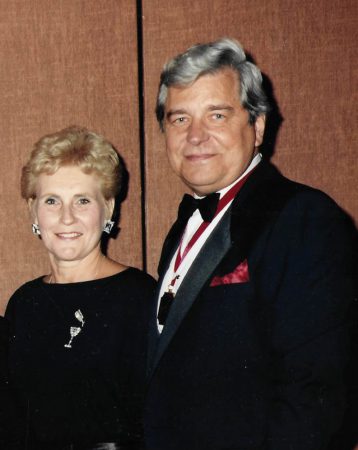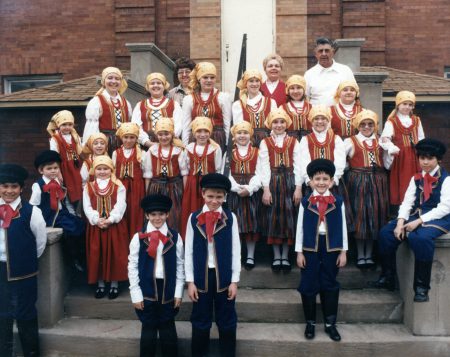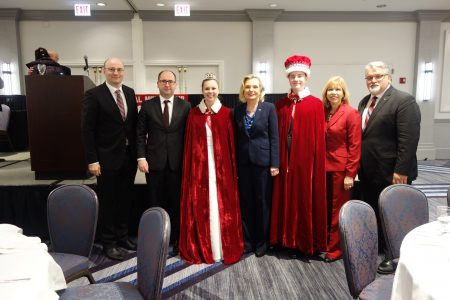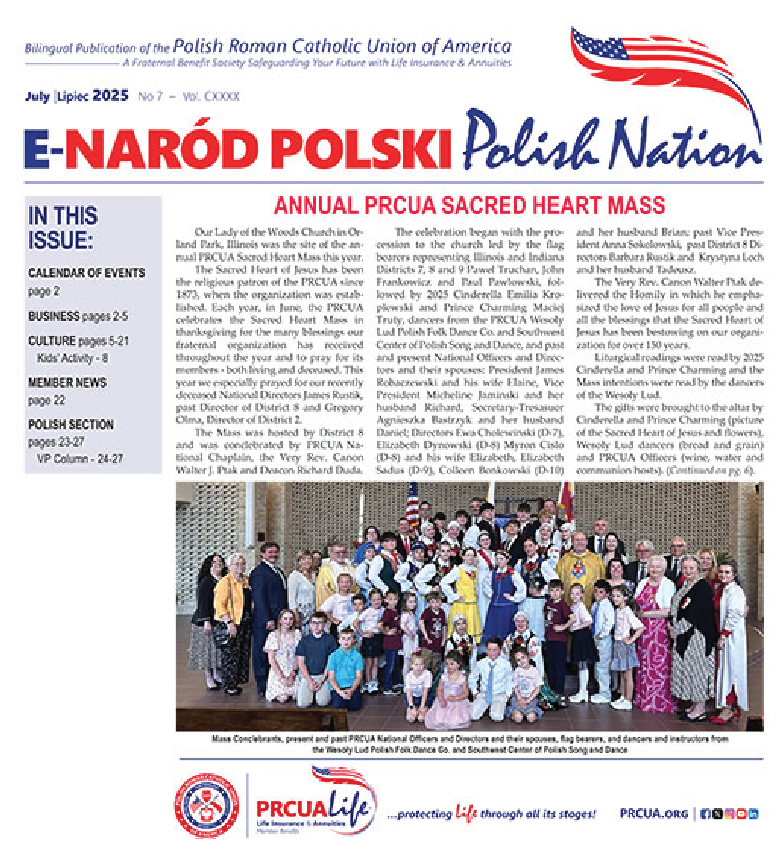Every day I wake up, have an espresso and turn on the tv. One day in mid-August, instead of the news, the original movie “Annie” was playing. Richard and I were both pulled into this movie although we have seen it before. The musical lightened the grim reality of the lives of this little orphan and her friends. At a time when the last few months have been surreal and the silver lining of hope opens and closes, we need to lighten the heavy load of the everyday unknowns with a little “singing and dancing” of our own. But the question is how, when “in-person” or remote schooling or a hybrid of both is on the minds and hearts of each and every school staff member and parent. And rightly so, education and adaptability to new settings lay the groundwork for the child’s life into adulthood. With that said, the ancillary activities which also greatly contribute to the formation of the child’s personality, skills and talents (sports, dance, secondary language, scouting, arts and crafts, etc.) will have to “wait and see” the outcome of the health and safety once regular school is in full bloom. In the meantime, we must continue to exercise patience, creativity, patience, safety, more patience, and learn to go with the flow by taking precautions.
Speaking of precautions, as the uncertainty rows while a miracle drug for Covid-19 is found, I wondered again how people adapted to life amid disease during past outbreaks. I found an article on history.com regarding the timelines of the top five precautions:
- Quarantine (derived from the Italian word quarantino meaning 40 day period). It was first passed into law on July 27, 1377 during the Bubonic Plague (Black Death).
- Socially distant food and drink pickup. During the Italian Plague (1629-1631), the wealthy citizens of Tuscany cut narrow windows known as “wine windows” or buchette del vino in their villas, for wine sellers to pass their goods to their clientele. The 150 wine windows in Florence, for example, were restored 400 years later during the latest pandemic to serve everything from wine to coffee and gelato. (By the way, vinegar was used as a disinfectant when accepting payment).
- Mask wearing. During the plague, masks with long, bird-like beaks were worn creating social distance and stopping the spread of diseases which was thought to be through bad smells in the air. During the 1918 pandemic, masks became the go-to means of stopping the spread of public infection. In September of 1918, masks were mandatory in San Francisco and the names of those who resisted were published as “mask slackers” in the local newspapers. “Wear a mask and save your life” was the slogan then and is now.
- Washing hands and surfaces. This accepted practice of hygiene was a novelty in the early 20th century, but was remedied quickly with ground floor bathrooms or “powder rooms” added which separated the germs guests brought in away from the resident family. (Typhoid Mary is a case in point of not washing her hands before handling food). Having a ground floor sink made it easier to wash your hands of dirt, grime and especially, germs.
- Fresh air and adaptive schooling. Fresh air helped contain the tuberculosis outbreak in the early 1900s that claimed more than 450 children daily in the U.S. crowded classrooms and the lack of fresh air was to blame. Germany pioneered the open-air classrooms, and by 1918, more than 130 American cities had them. With improved public health and sanitation standards, together with the discovery of streptomycin and other effective antibiotics, tuberculosis receded by the mid-1940s. Within a decade, the open-air school movement came to an end as well.
If you are wondering how long this pandemic may last, “The Spanish flu, also known as the 1918 flu pandemic, was an unusually deadly influenza pandemic caused by the H1N1 influenza A virus. Lasting from February 1918 to April 1920, it infected 500 million people–about a third of the world’s population at the time–in four successive waves. The death toll is typically estimated to have been somewhere between 17 million and 50 million, making it one of the deadliest pandemics in human history. 1st wave of the 1918 Pandemic occurred in the spring and was generally mild (typical flu-like symptoms: fever, chills, and fatigue; recovering in several days; few died). 2nd wave hit hard in the fall of the same year – highly contagious, victims died within hours or days of developing symptoms, their skin turned blue, and their lungs filled with fluid causing them to suffocate.” (1918 Flu Pandemic – Unusually Deadly Influenza Pandemic (Wikipedia)). To weather this storm, we have to take precautions vigilantly and this will all become a memory and life will return to normal eventually.
In the meantime, life continues and with it, anniversaries and birthdays to celebrate. August seemed a popular month for weddings as Krystyna and Tadeusz Lech celebrated their 45th on 8/2; #32 for Richard and me (8/10); #54 for Joann and Wally Ozog and #42 for Teresa and Wacek Pazdziora (8/12); #55 for Judy and Joe Drobot (8/14); #61 for Loretta and Edward Dykla (8/15); #10 for Agnieszka and Daniel Bastrzyk (8/21). September wedding anniversary wishes go Sally and Thaddeus Klamerus celebrating #69 on 9/1.
As for the last several years, my September birthday evokes a time for reflection of professional and personal growth and assessment. I celebrate together with a few past Vice Presidents, including Anna Sokolowski (9/6) and Lorie Rose Gorny (9/16) who will be celebrating her 98th birthday, and, my mentor, the late Regina Ocwieja (9/22), as well as past President, Wally Ozog and Kevin Kucik (9/14); Loretta Dykla, Mary Jane Robles, Michael Turkiewicz and (9/16); I share the day with Andrew Lech (9/17); Tommy Robaczewski (9/18); Rev. Walter Ptak (9/20); Dir. of Marketing Elzbieta Sawczuk (9/22); Elaine Robaczewski (9/26) and friends, Evelyn Cedzidlo (9/6) and Joanna Niedzielski (9/25). HAPPY BIRTHDAY AND STO LAT TO ALL SEPTEMBER BABIES! Happy 5th Anniversary to my niece, Joline, and hubby, Anthony! HAPPY GRANDPARENTS’ DAY (especially to Teresa and Edward Rogala on the birth of their first grandchild, Dominic Francis Jacher)!
We lost a great PRCUA fraternalist while heaven gained an angel at the end of July. Barbara Pawlowski, who just turned 90 in January of this year, was one of our PRCUA gold members (52+) and former insurance supervisor for our organization, but she is best known as the founder of the Calumet Region (District #9) Dance and Language School, which through the years evolved into what is now known as the St. Raphael Kalinowski Polish School and Mała Polska Dance Group. Quite a feat, considering Barbara was Irish and German, but thanks to her husband Casey, she was introduced to all things Polish and she embraced the Polish heritage totally. Our condolences to her sons, Ted and Paul, and to her fraternal daughters, Elizabeth Grabowski, Grazyna Biestek and Elizabeth Sadus. Thank you, Barbara, for your service to PRCUA and the Polish American Community. Eternal rest grant unto her, O Lord, and let perpetual light shine upon her. May her soul and the souls of the faithful departed rest in peace. Please read the PRCUA tribute to Barbara in this issue of the Naród Polski on page 15.
Remember how I started this article, well let these closing words remind you.
The sun will come out tomorrow I just stick out my chin
Bet your bottom dollar that tomorrow And grin and say,
There’ll be sun! Oh, the sun will come out tomorrow
Just thinking about tomorrow So ya gotta hang on ’til tomorrow
Clears away the cobwebs, Come what may
And the sorrow ’til there’s none! Tomorrow! Tomorrow!
When I’m stuck in a day I love ya tomorrow!
That’s gray and lonely, You’re always a day away!
with music by Charles Strouse and lyrics by Martin Charnin
“Jak szybko mijają chwile, jak szybko płynie czas.” I remember the first time I met Consul General Piotr Janicki at the PRCUA building at the beginning of his term and since then,
at so many other events, including the Cinderella-Prince Charming Balls and other Polonian events. The PRCUA extends an open invitation for the Janicki family to attend the Cinderella-Prince Charming Balls and of course, all PRCUA and PMA events. It has been our pleasure to have met you, your wife and daughter – Princess Anna – and we wish
you only the best that life can offer.
P.S. PRCUA has begun its marathon of E-Sports Tournaments – the first was in August with Baseball and the next is Soccer – come join the fun and read all about it in this issue of the Narod Polski, on our website and social media platforms. HAPPY SEPTEMBER!
Photos:

Sally and Thaddeus Klamerus

Barbara and Casey Pawlowski (top right) with the Calumet Region Dancers in 1985

2017 May Third Brunch (l-r): Consul General RP Piotr Janicki; Deputy Speaker of the Senate RP Adam Bielan; Cinderella 2017 Kayla Leonhard; Senator RP Anna Maria Anders; Prince Charming 2017 Kacper Kaczmarczyk; PRCUA Vice President Micheline Jaminski; PRCUA President James Robaczewski

